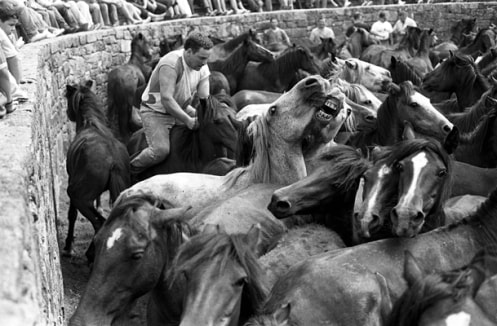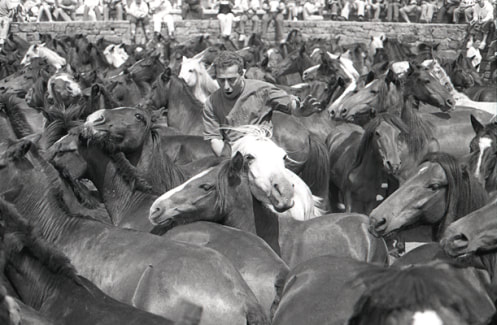|
The Shearing of the Beasts - A Rapa Das Bestas
This centuries old festival featuring man and wild horses takes place annually in Galicia, Northwest Spain. It involves the rounding up of several hundred wild horses from the area of Taberios Terra de Montes, the cutting of their manes and tails, branding, and their eventual return to the wild. |
|
The festival begins with an offertory mass at dawn in honour of St. Lourenzo. Local villagers and workmen then take to the hills rounding up the horses and herding them towards the village. In the evening, hundreds of visitors pack the terraced seating around the granite curro (coral) in which the Rapa takes place. The shrill cry of traditional Galician pipes and chanting of the crowd generates an expectant and charged atmospher, as everyone awaits the arrival of the wild horses.
Heavy copper panelled doors of the curro are dramatically thrown open and an enormous roar of approval greets the steady stream of horses which gallop in. Hundreds of horses fill the arena until it is so tightly packed with heaving bodies that the sandy floor is no longer visible. A dense cloud of dust rises from the churning hooves and the air quickly thickens with the pungent smell of sweating horses. |
This series of images featured in a solo exhibition at The Watergate Gallery, Kilkenny, 2005.


